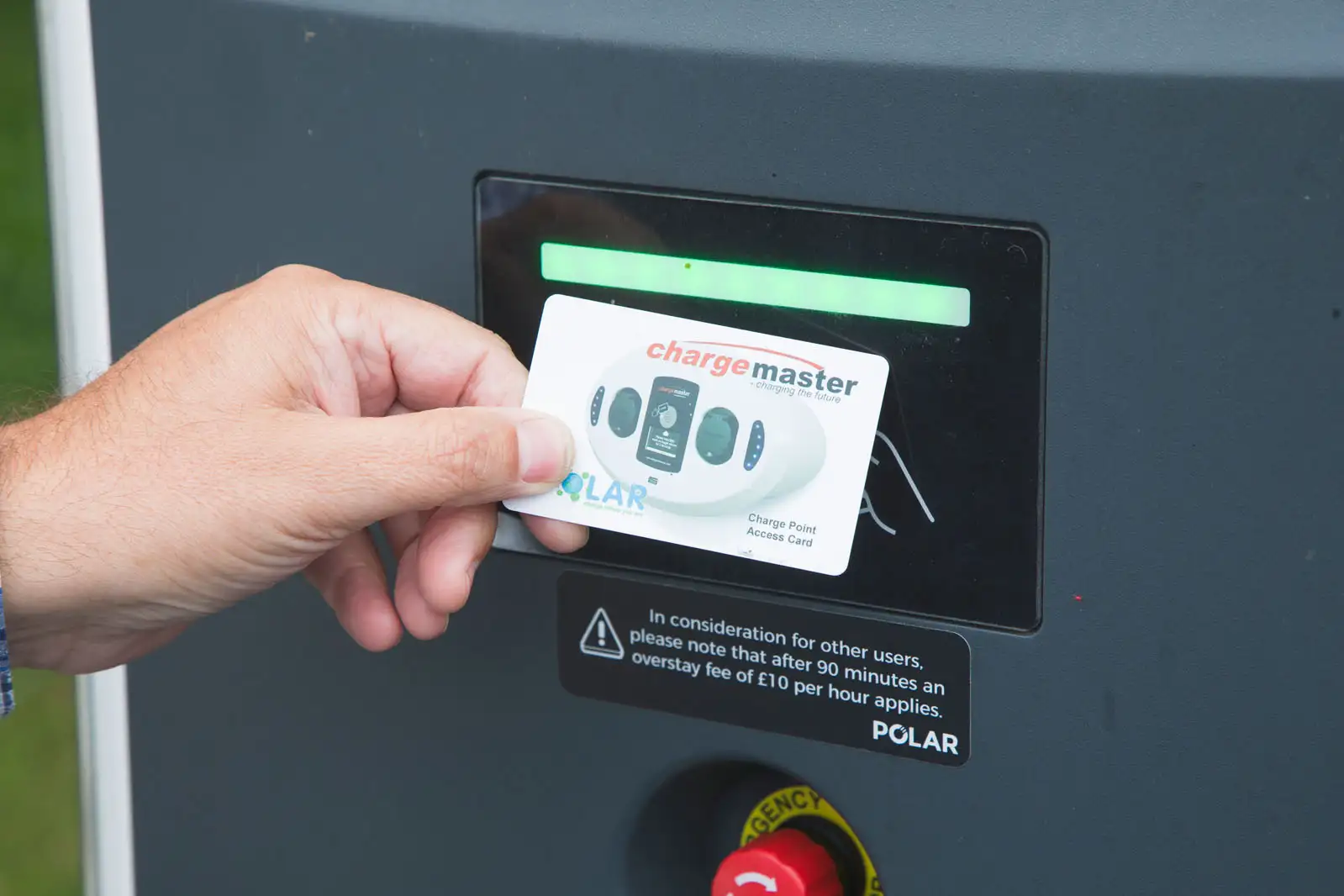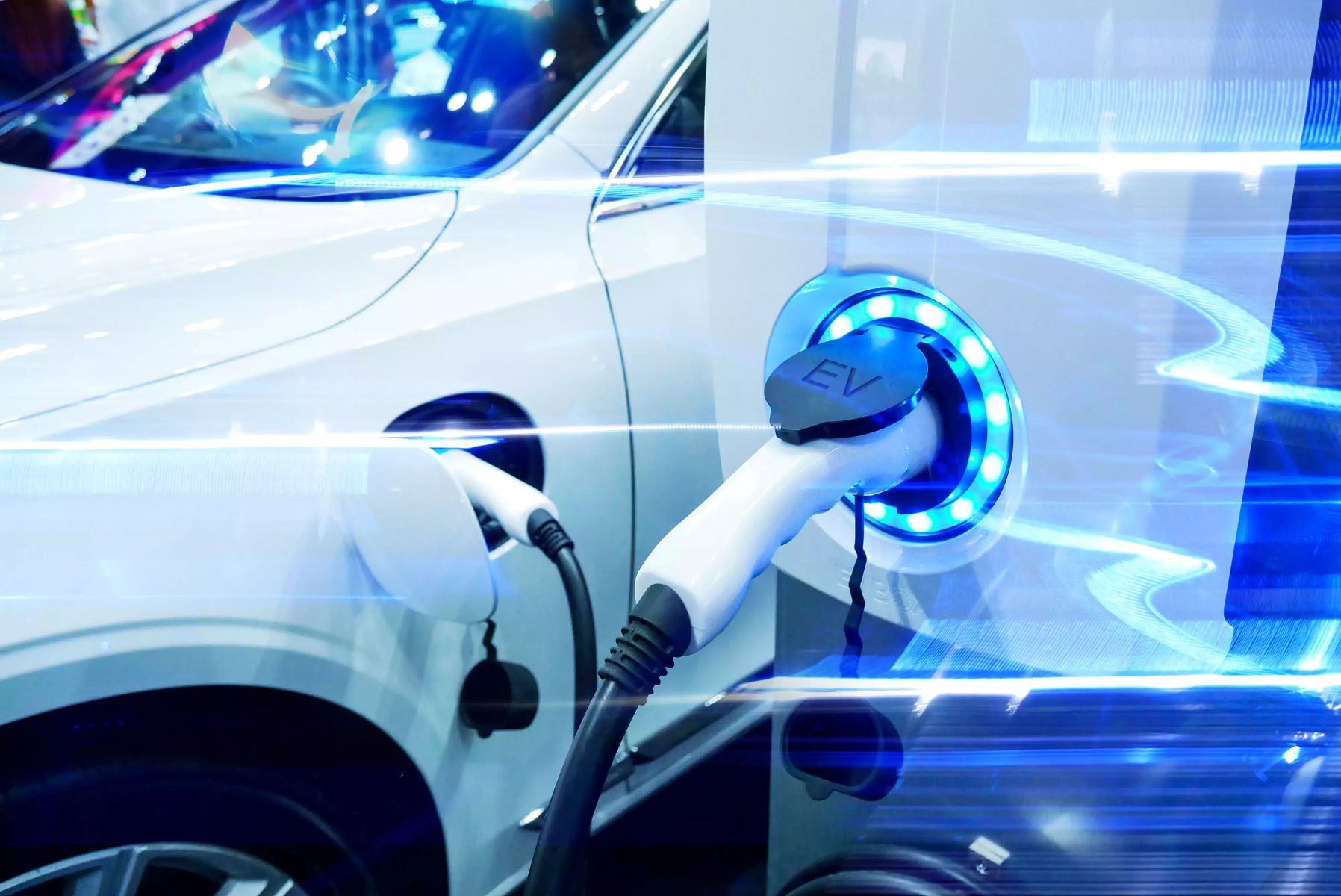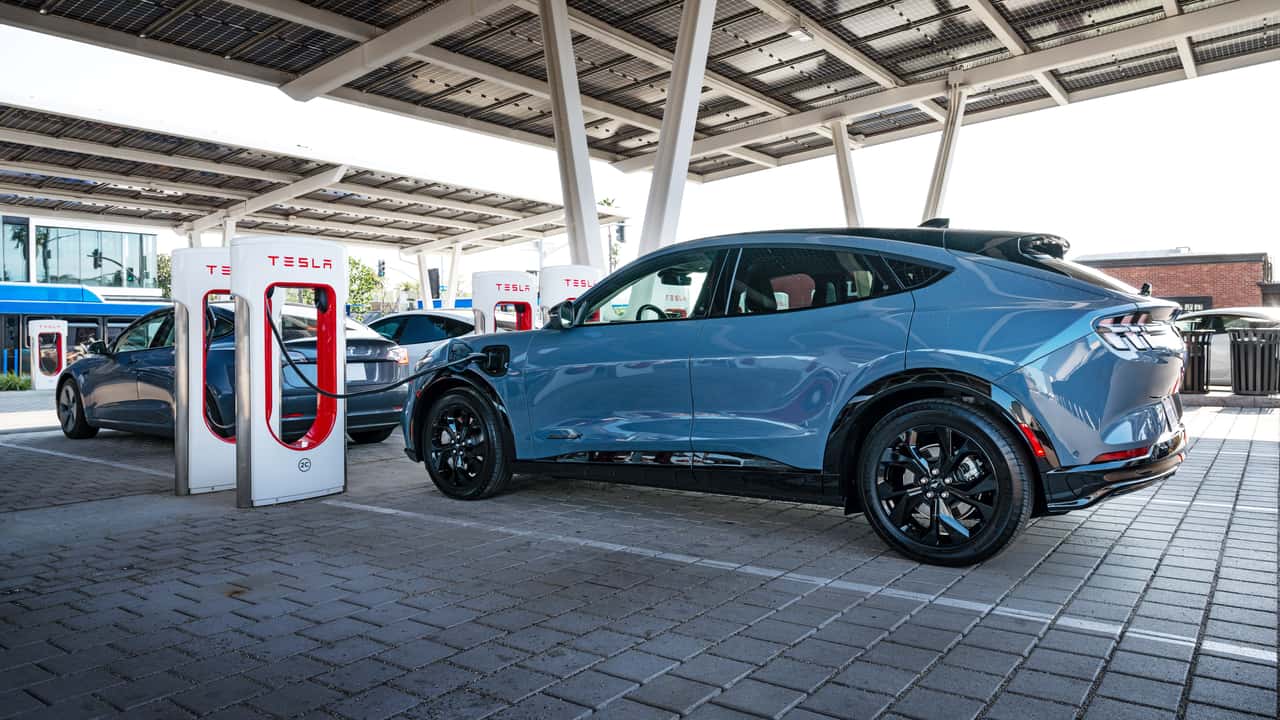What Is A RFID Card For EV Charging
An RFID (Radio Frequency Identification) card for EV (Electric Vehicle) charging is a technology-based card that allows EV owners to access and use charging stations conveniently. It utilizes RFID technology to wirelessly communicate with the charging station and initiate the charging process. With an RFID card, EV owners can easily identify themselves and their vehicles, enabling a seamless and secure charging experience.
RFID technology works by using radio waves to transfer data between the RFID card and the charging station. The card contains a microchip that stores information, such as the EV owner’s identification and charging preferences. When the RFID card is placed near the charging station, the radio waves allow the card and the station to communicate and authenticate the EV owner’s access rights.
The primary purpose of an RFID card for EV charging is to streamline the charging process for EV owners. Instead of manually entering user credentials or connecting physical cables, the RFID card enables a fast and hassle-free method to start and monitor the charging session. It eliminates the need for multiple authentication steps and reduces the risk of unauthorized use, making it a secure and convenient solution for EV charging infrastructure.
Using an RFID card offers several benefits for EV owners. Firstly, it provides a seamless and user-friendly experience, allowing EV owners to easily access charging stations without the need to carry physical keys or interact with complex interfaces. Additionally, RFID cards can offer personalized charging preferences, such as charging rates or power limits, ensuring that EV owners have control over their charging experience.
Furthermore, RFID cards for EV charging promote interoperability and standardization across different charging networks. By using a universal RFID card, EV owners can access multiple charging stations regardless of the service provider or location. This reduces the hassle of managing different accounts and cards, making it more convenient for EV owners who frequently travel or use different charging networks.
In summary, an RFID card for EV charging is a technology-based card that enables EV owners to access and use charging stations seamlessly. It utilizes RFID technology to wirelessly communicate with the charging station, providing a secure and convenient method for EV owners to initiate and monitor their charging sessions. With the widespread adoption of RFID cards, EV owners can enjoy a streamlined charging experience, promoting interoperability and ease of use across various charging networks.
How Does RFID Technology Work?
RFID (Radio Frequency Identification) technology works through the use of radio waves to wirelessly transfer data between an RFID card and a reader device. The technology consists of two main components: the RFID card and the RFID reader.
The RFID card, also known as a tag or transponder, contains a microchip and an antenna. The microchip stores information, such as the unique identifier of the card and other relevant data. The antenna is responsible for transmitting and receiving radio waves, allowing communication between the RFID card and the reader.
The RFID reader, on the other hand, consists of an antenna and a transceiver. The antenna emits radio waves, which are received by the RFID card’s antenna. When the two antennas are in close proximity, the reader energizes the RFID card by transmitting a radio signal. This activation allows the RFID card to send back its stored data to the reader.
There are two main types of RFID technology: passive RFID and active RFID. Passive RFID cards do not have their own power source and rely on the energy from the reader to operate. When the reader emits radio waves, it powers the passive RFID card, enabling it to transmit its stored information back to the reader. Passive RFID cards are often used in applications where the distance between the card and the reader is relatively short.
Active RFID cards, on the other hand, have their own power source, usually a battery. These cards can actively transmit their data to the reader without relying on the reader’s energy. Active RFID cards are capable of longer-range communication and are commonly used in applications that require real-time tracking or monitoring.
Once the RFID reader receives the information from the RFID card, it can process the data and perform various actions based on the application’s requirements. In the case of EV charging, the reader authenticates the RFID card’s access rights to the charging station and initiates the charging process accordingly.
Overall, RFID technology enables seamless wireless communication between the RFID card and the reader device using radio waves. The technology is versatile and finds applications in various industries, including EV charging, inventory management, access control, and asset tracking.
Benefits of Using RFID Cards for EV Charging
Using RFID (Radio Frequency Identification) cards for EV (Electric Vehicle) charging offers numerous benefits for EV owners. These cards enhance the charging experience by providing convenience, security, interoperability, and personalization.
One of the key advantages of RFID cards for EV charging is the seamless and user-friendly experience they offer. With an RFID card, EV owners can easily access charging stations without the need for physical keys or complicated authentication processes. Simply placing the RFID card near the charging station initiates the charging session, leading to a hassle-free and efficient experience.
Furthermore, RFID cards add an extra layer of security to the EV charging process. The cards contain unique identifiers and authentication protocols that help prevent unauthorized usage. This ensures that only authorized EV owners can access the charging stations, protecting both the charging infrastructure and the EV owners’ vehicles from potential misuse or theft.
RFID cards also promote interoperability across different charging networks. With a universal RFID card, EV owners can access charging stations from various service providers regardless of their location. This eliminates the need for multiple cards or accounts, simplifying the charging process for EV owners who frequently travel or use different charging networks.
Additionally, RFID cards allow for personalized charging preferences. EV owners can program their RFID cards with specific charging settings, such as charging rates or power limits. These preferences can be easily communicated to the charging station through the RFID card, enabling a tailored charging experience and giving EV owners more control over their charging sessions.
Moreover, using RFID cards for EV charging promotes efficiency and reduces the time spent on authentication procedures. EV owners no longer need to enter login credentials or input PIN codes to start a charging session. The RFID card automates the identification process, saving valuable time and ensuring a smoother charging experience.
Lastly, RFID cards contribute to the overall growth and development of the EV charging infrastructure. By implementing a standardized method of access and authentication, RFID technology encourages the expansion of charging networks. This, in turn, increases the availability and accessibility of charging stations, making EV ownership more viable and appealing to a larger audience.
In summary, RFID cards provide a range of benefits for EV owners in terms of convenience, security, interoperability, personalization, efficiency, and infrastructure growth. These cards streamline the EV charging process, offering a user-friendly and secure experience while promoting interoperability across different charging networks. By utilizing RFID technology, EV owners can enjoy a more convenient and robust charging infrastructure for their electric vehicles.
Types of RFID Cards for EV Charging
There are different types of RFID (Radio Frequency Identification) cards available for EV (Electric Vehicle) charging, each with its own features and capabilities. These cards cater to the diverse needs and preferences of EV owners, offering a range of options for accessing and utilizing charging stations.
1. Basic RFID Cards: These are standard RFID cards that provide basic access to EV charging stations. They typically contain a unique identifier that allows EV owners to initiate the charging process. Basic RFID cards are widely used and often provided by charging station operators or service providers.
2. Smart RFID Cards: Smart RFID cards, also known as smart cards or chip cards, offer enhanced functionality and security features. They incorporate a microprocessor chip that stores additional data and allows for more advanced interactions with the charging infrastructure. Smart RFID cards may provide features such as advanced authentication protocols, charging history tracking, and customizable charging preferences.
3. Contactless RFID Cards: Contactless RFID cards operate without the need for physical contact with the charging station reader. They use near-field communication (NFC) technology to transmit data wirelessly. Contactless RFID cards are convenient to use, as they can be simply tapped or waved near the reader to initiate the charging process. This type of card is often used in applications where speed and ease of use are essential.
4. Biometric RFID Cards: Biometric RFID cards incorporate biometric data, such as fingerprints or iris scans, to enhance security and ensure secure access to charging stations. These cards require a biometric authentication step in addition to the RFID communication, providing an added layer of protection against unauthorized usage. Biometric RFID cards are suitable for EV owners who prioritize maximum security for their charging sessions.
5. Multi-technology RFID Cards: Multi-technology RFID cards combine different access technologies, such as RFID, magnetic stripe, and barcode, into a single card. This allows EV owners to use the same card across various charging infrastructure that employs different access mechanisms. These cards offer a high level of compatibility and ease of use, as EV owners do not need to carry multiple cards or devices for different charging networks.
It’s worth noting that the availability of different types of RFID cards for EV charging may vary depending on the charging infrastructure, service providers, and geographical location. EV owners should check with their respective charging network operators or service providers to determine which type of RFID card is compatible and available for use.
In summary, the types of RFID cards for EV charging include basic RFID cards, smart RFID cards, contactless RFID cards, biometric RFID cards, and multi-technology RFID cards. Each type offers unique features and benefits, catering to the varied needs and preferences of EV owners. By selecting the appropriate RFID card type, EV owners can enjoy seamless access to charging stations and ensure a secure and personalized charging experience for their electric vehicles.
Where Can You Use an RFID Card for EV Charging?
An RFID (Radio Frequency Identification) card for EV (Electric Vehicle) charging can be used at various locations that provide EV charging infrastructure. These charging stations can be found in a range of settings and locations, ensuring that EV owners have access to convenient and reliable charging options.
1. Public Charging Stations: Public charging stations are commonly found in public parking lots, shopping centers, roadside rest areas, and other publicly accessible areas. These stations often accept RFID cards from different service providers or have their own RFID card systems. Public charging stations provide EV owners with a convenient solution when they are away from home and require a charge during their daily activities.
2. Workplace Charging Stations: Many workplaces offer EV charging facilities to encourage sustainability and support their employees who drive electric vehicles. These charging stations are typically equipped with RFID card readers to provide controlled access. EV owners can conveniently use their RFID cards at workplace charging stations, ensuring a full charge for their electric vehicles while they work.
3. Residential Charging Points: Home charging is a popular option for EV owners, allowing them to conveniently charge their electric vehicles overnight. Residential charging points, whether installed at single-family homes or in multi-unit residential buildings, can be equipped with RFID card readers for easy authentication. EV owners can use their RFID cards to start and monitor charging sessions from the comfort of their own homes.
4. Fleet Charging Stations: Charging stations for electric vehicle fleets, such as those used by companies or government agencies, often utilize RFID card systems for controlled access and usage tracking. Fleet charging stations are strategically located at depots or designated areas to accommodate the charging needs of multiple electric vehicles. EV owners within a fleet can use their RFID cards to access and utilize the charging infrastructure provided by their organization.
5. Destination Charging: Destination charging refers to EV charging facilities at hotels, restaurants, and other destinations that cater to the needs of EV owners. These locations often have RFID card readers at their charging stations, allowing guests or patrons to conveniently charge their electric vehicles while they visit or stay. Destination charging expands the charging options for EV owners, providing them with convenient access to charging facilities at various establishments.
It’s important to note that the availability of RFID card usage may vary depending on the specific charging infrastructure and service providers. EV owners should familiarize themselves with their RFID card’s compatibility and the supported charging stations in their area. This information can usually be obtained from the RFID card provider, charging network operators, or EV charging-related websites and applications.
In summary, an RFID card for EV charging can be used at various locations, including public charging stations, workplace charging stations, residential charging points, fleet charging stations, and destination charging facilities. These locations provide EV owners with convenient and reliable access to charging infrastructure, enabling them to power their electric vehicles wherever they travel or spend time.
How to Obtain an RFID Card for EV Charging
To obtain an RFID (Radio Frequency Identification) card for EV (Electric Vehicle) charging, follow these steps to ensure a smooth and hassle-free process:
1. Research Service Providers: Start by researching the available service providers or charging networks in your area. Look for reputable companies that offer RFID card services for EV charging. Consider factors such as coverage, charging network size, and customer reviews to make an informed decision.
2. Select a Service Provider: Once you have gathered information about different service providers, choose the one that best fits your needs. Evaluate their pricing plans, customer support, and any additional features they offer. Some service providers may offer loyalty programs, personalized charging settings, or partnerships with other charging networks, which can enhance your overall charging experience.
3. Sign Up or Register: Visit the chosen service provider’s website or application and sign up for an account. Fill out the necessary information, such as your name, contact details, and vehicle information. Some providers may require additional documents, such as proof of vehicle ownership or driver’s license, so be prepared to provide those if necessary.
4. Order an RFID Card: Once you have created an account, you can often order an RFID card directly from the service provider. Some providers offer free RFID cards as part of their membership plans or for a nominal fee. Provide your shipping address and any other requested information to have the RFID card delivered to your doorstep.
5. Activate the RFID Card: Upon receiving the RFID card, follow the activation instructions provided by the service provider. Activation may involve linking the RFID card to your account, confirming your identity, or completing any required setup steps. Ensure that the RFID card is successfully activated and ready to use before attempting to use it at an EV charging station.
6. Locate Supported Charging Stations: Familiarize yourself with the charging stations that support the RFID card you obtained. Most service providers have mobile applications or websites that provide up-to-date maps, lists, or navigation features to help you locate the nearest charging stations compatible with your RFID card. Make note of the supported networks, plug types, and any specific access requirements for each station.
7. Use Your RFID Card: When you visit a supported charging station, follow the instructions provided on the charging station or in the service provider’s mobile application. Hold or tap your RFID card near the reader to initiate the charging session. Once the RFID card is recognized and authorized, follow any additional prompts or settings to begin charging your EV.
By following these steps, you can obtain an RFID card for EV charging and take advantage of the convenience and benefits it offers. Remember to periodically check for updates from your service provider and familiarize yourself with their terms and conditions to ensure a seamless experience while using the RFID card for EV charging.
How to Use an RFID Card for EV Charging
Using an RFID (Radio Frequency Identification) card for EV (Electric Vehicle) charging is a simple and straightforward process. Here are the steps to follow when using an RFID card to charge your electric vehicle:
1. Locate a Charging Station: Identify a charging station that supports the RFID card provided by your charging network or service provider. You can use mobile applications, websites, or navigation systems to find nearby charging stations and check their compatibility with your RFID card.
2. Approach the Charging Station: Drive your electric vehicle to the selected charging station and park in an available charging spot. Ensure that your vehicle is properly positioned for connection to the charging station and that the charging cable can reach your EV’s charging port.
3. Retrieve Your RFID Card: Take out your RFID card, which should have been provided to you by your charging network or service provider. Keep it easily accessible, such as in your wallet, pocket, or EV’s glove compartment.
4. Use the RFID Card Reader: Locate the RFID card reader on the charging station. It is typically found near the charging cable or integrated into the charging station’s display panel. Hold or tap your RFID card firmly against the reader to initiate the charging process.
5. Authorize Access: The charging station’s RFID card reader will communicate with your card and verify its authenticity and access privileges. Be patient for a moment while the reader validates the information on your RFID card.
6. Connect the Charging Cable: Once your RFID card has been successfully authenticated, the charging station will indicate that it is ready to provide power. Unplug the charging cable from its holder on the charging station (if applicable) and securely connect one end to your EV’s charging port. Ensure that the connection is firm and properly aligned.
7. Monitor the Charging Progress: The charging station’s display panel or your EV’s onboard charging indicators will provide real-time updates on the charging progress. Pay attention to the charging rate, elapsed time, and any notifications from the charging station. If available, you can also monitor the charging session using the mobile application or website of your charging network or service provider.
8. End the Charging Session: When you’ve reached your desired charge level or completed your charging session, safely disconnect the charging cable from your EV’s charging port. Return the cable to its holder, if applicable, and ensure that it is properly stowed. Some charging stations may require you to tap your RFID card on the reader again to indicate the end of the charging session.
By following these steps, you can effectively and efficiently use an RFID card to charge your electric vehicle at compatible charging stations. Always refer to the specific instructions provided by your charging network or service provider and familiarize yourself with any additional features or requirements of the charging station.
Common Questions and Concerns about RFID Cards for EV Charging
RFID (Radio Frequency Identification) cards for EV (Electric Vehicle) charging are becoming increasingly popular, but it’s natural to have some questions and concerns about their usage. Here are answers to some of the most common queries and concerns:
1. Are RFID cards compatible with all charging stations?
RFID cards are typically specific to a charging network or service provider. Therefore, not all RFID cards will be compatible with every charging station. It’s essential to ensure that the charging station you wish to use supports the RFID card provided by your charging network or service provider.
2. How do I obtain an RFID card?
To obtain an RFID card, you need to sign up with a charging network or service provider that offers RFID card services. Once you create an account, you can often order an RFID card directly from them. Some providers offer free RFID cards as part of their membership plans or charge a nominal fee.
3. Can I use multiple RFID cards for EV charging?
In most cases, you can use multiple RFID cards if they are compatible with the charging stations you plan to use. Different providers and networks may have their own RFID cards, so it’s essential to check the compatibility of each card with the desired charging stations.
4. What happens if I lose my RFID card?
If you lose your RFID card, contact your charging network or service provider immediately. They will guide you through the process of deactivating the lost card and obtaining a replacement. Treat your RFID card like any other valuable item to minimize the risk of loss.
5. Can someone else use my RFID card to charge their EV?
RFID cards are typically associated with specific accounts and vehicles, and unauthorized usage is prevented through authentication processes. However, it’s important to take precautions to protect your RFID card to prevent misuse. Notify your charging network or service provider immediately if your RFID card is lost or stolen.
6. Can I use an RFID card from one charging network at another charging network’s stations?
Interoperability between different charging networks and their RFID cards may vary. Some charging networks have partnerships or agreements that allow their RFID cards to be used at other networks’ stations, while others may require separate cards or payment methods. Check with your charging network or service provider for information about cross-network usage of RFID cards.
7. Can I use my RFID card internationally?
RFID card compatibility and usage may differ across countries. Some RFID cards may have limited or no compatibility outside of their home country. If you plan to use your RFID card internationally, research the compatibility and availability of charging stations that accept your RFID card in the intended country or region.
8. Do I need to bring my RFID card every time I charge?
Yes, you need to bring your RFID card with you every time you plan to charge at a supported charging station. You will need to authenticate your access to the charging station and initiate the charging session by using your RFID card.
In summary, RFID cards for EV charging have specific compatibility with charging stations and are associated with individual accounts and vehicles. If you have any questions or concerns about RFID card usage, consult your charging network or service provider for guidance, ensuring a seamless and efficient charging experience for your electric vehicle.
Conclusion
RFID (Radio Frequency Identification) cards have revolutionized the way we access and utilize EV (Electric Vehicle) charging stations. These convenient and secure cards enable EV owners to initiate charging sessions with ease, providing a seamless and user-friendly experience. By wirelessly communicating with the charging station, RFID cards streamline the authentication process and protect against unauthorized usage.
Using RFID cards for EV charging offers numerous benefits, including convenience, security, interoperability, and personalization. EV owners can easily access charging stations without physical keys or complex authentication procedures. RFID cards also add an extra layer of security by verifying the cardholder’s access rights, protecting both the charging infrastructure and the EV itself.
Moreover, RFID cards promote interoperability across different charging networks, allowing EV owners to use a universal card at multiple stations. They also offer the flexibility to customize charging preferences, ensuring a tailored charging experience. With RFID technology, EV owners can enjoy efficient and standardized access to charging infrastructure, making electric vehicle ownership more accessible and appealing.
To obtain an RFID card, research and choose a reliable charging network or service provider. Sign up, order the RFID card, and activate it to ensure seamless usage. Locate supported charging stations, approach the station, and use the RFID card to initiate the charging process. Monitor the charging progress and end the session once your desired charge level is reached.
Common questions and concerns about RFID cards for EV charging revolve around compatibility, obtaining replacement cards, usage by others, cross-network usage, and international usage. EV owners should contact their charging network or service provider for guidance and clarifications related to the usage and specific concerns they may have.
In conclusion, RFID cards for EV charging are a game-changer in the electric vehicle industry. They offer convenience, security, interoperability, and personalization, enabling EV owners to charge their vehicles seamlessly and enjoy a hassle-free charging experience. With the continued advancements in RFID technology, we can expect even more innovations to enhance the EV charging landscape in the future.

























